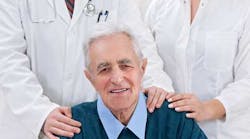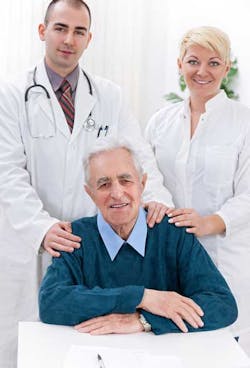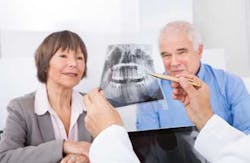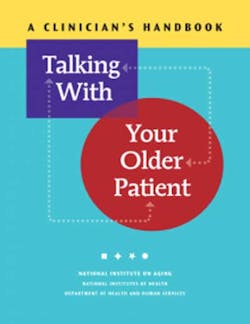“Good communication is an important part of the healing process.”(1)Studies find that effective physician-patient communication has specific benefits.(2) They are – patients are more likely to follow treatment and other recommendations; patients obtain enhanced outcomes; patients experience greater satisfaction with their treatment; and patients are less likely to initiate malpractice suits. These concepts are easily transferrable to any health-care setting. In this article I will unveil a new tool for communication specifically with older patients.
‘‘Medicine is an art whose magic and creative ability have long been recognized as residing in the interpersonal aspects of the patient-physician relationship.’’(3) This can also be applied to dentistry, dental hygiene, and dental assisting. The most important objective of any clinician-patient communication is improving the patient's health and care. The three main goals of clinician-patient communication are creating a good interpersonal relationship, facilitating exchange of information, and including patients in the decision-making process.(2)
In the dental or dental hygiene clinic, we can communicate both verbally and non-verbally. Nonverbal communication includes body language, the manner in which we carry ourselves, gestures, tone of voice, and facial expressions. The message we send can be positive, such as empathy, respect, and warmth, or it can be negative, such as confrontation, condescension, or disdain. Talking to the patient with your back turned, your mask hanging off your ears, or while busy with other tasks does not project warmth and concern. Sitting down and speaking with patients at eye level creates a positive atmosphere and places them at ease. We can also actively listen to patients to hear their concerns and goals, and this includes concentrating on what a patient is saying, as well as observing the person’s body language.
The National Institute on Aging (NIA), part of the National Institutes of Health, developed a booklet to assist with these topics.(4) The text refers to clinicians, and the booklet is intended for use by a variety of professionals who deal directly with patients – physicians, physicians-in-training, nurse practitioners, nurses, physician assistants, and other health-care professionals. The goal is to introduce or reinforce communication skills that are essential in caring for older patients and their families. “Talking With Your Older Patient: A Clinician’s Handbook”offers practical techniques and approaches to help with diagnosis, promote treatment adherence, make more efficient use of clinicians’ time, and increase patient and provider satisfaction.(4)
Important parts of the booklet are health care perceptions and views on aging; understanding elder patients; obtaining a thorough medical history, including information on social circumstances and lifestyle and medical and family history; encouraging wellness; discussing sensitive subjects; and supporting patients with chronic conditions.
Communicating bad news is never easy, but necessary. Including families and caregivers is vital to the communication process. Communicating with a confused patient holds distinct challenges, and specific techniques can help providers talk with patients and caregivers about a diagnosis. Continuing communication is crucial to working effectively with older patients. If a patient does not follow recommendations or misses appointments, determine whether a problem in communication has developed. Paying attention to communication increases the odds of greater health for your patients and satisfaction for you both.
Besides the booklet itself, there are numerous resources, such as publications and services. Good communication can be learned. Putting effective communication techniques to use will help shape more satisfying relationships with older patients, and you will become better accomplished at managing their care.
Maria Perno Goldie, RDH, MS, is the editorial director of RDH eVillage FOCUS.
References
1. http://www.nia.nih.gov/health/publication/talking-your-older-patient/foreword.
2. Ha JF, and Longnecker N. Doctor-Patient Communication: A Review. Ochsner J. 2010 Spring; 10(1): 38–43.
3. Hall JA, Roter DL, Rand CS. Communication of affect between patient and physician. J Health Soc Behav. 1981; 22 (1):18–30.
4. National Institute On Aging, National Institutes Of Health, Department Of Health And Human Services. A Clinician’s Handbook: Talking Your Older Patient. http://www.nia.nih.gov/sites/default/files/talking_with_your_older_patient.pdf.










